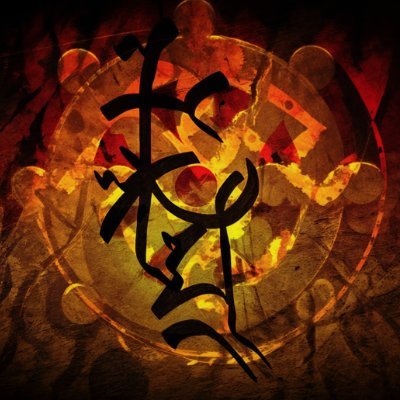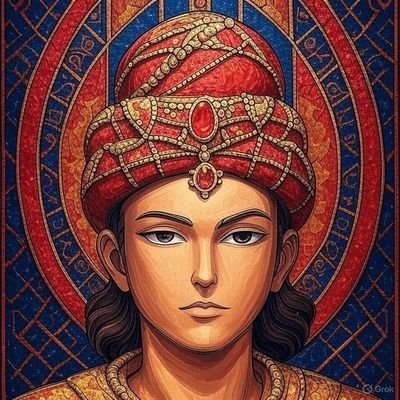
Rtam卐
@Rtam86418021
Followers
11K
Following
3K
Media
3K
Statuses
13K
Share things related to Buddhism,History, Archaeo-genetics & Linguistics
Joined January 2022
it's teachings into the compilation of Mahāyānist Abhidharma-piṭaka. Mahīśāsaka sect also contributed to the compilation of the important pure land Amitāyus(Longer Sukhāvatīvyūha) Sūtra.
0
0
2
Although unrelated but there existed an early Śrāvakayāna school a.k.a Mahīśāsaka wore blue robes,that later had an significant role in the development of Mahayana movement. Asaṅga, a key Mahāyāna figure(founder of Yogacāra), was initially ordained in this sect, incorporating
Blue is the flag of the "Scheduled Caste Federation," not the flag of the Buddhist community. (Sorry, I am not from the Ambedkarism religion created by some Dalits; I belong to the Ambedkar religion—the Buddhist community.) The flag of our community is these -
4
1
22
Axe,Baltic_BA rather than Central Steppe_MLBA(which Aryans were associated with).The Aryan ancestry(Sintashta/Srubnaya/Andronovo derived) among most Indo-aryan speakers ranges from ≥8%(Bengalis) to 17-30%(most of N-W & UC groups) to ≥40%(Hindu Jats,Rors) rather than the claim.
0
1
10
Horseshit actually, made by some ignorant wignat(not even true from pop genetics POV). The only people who have less than <5% Aryan DNA are modern Europeans(except groups in Russia), some Dravidian & Munda groups. Most Europeans got their steppe ancestry from Bell Beaker/Battle
@Rtam86418021 How accurate is this?
4
5
43
in a lot of Africans) Wavy hair (Indo-Mediterranoid tendency) Moderately high forehead (not receding) These traits are typical West Eurasian craniofacial traits rather than Negroid/Sub-Saharan African craniofacial typology. Btw a lot of Todas have skin tone similar or even
1
0
4
"African"? That IVC guy literally looks similar to the Toda man on right and have: >leptorrhine nose (narrow, high nasal bridge) >leptoprosopic (long, narrow)face >Moderately thin to mesorrhine (not everted)lips >orthognathous profile(little to no jaw projection unlike you see
@Rtam86418021 You made him look nearly an african
9
7
112
Some common Prakrit based Indian names "Suraj,Sona,Sonu,Lakhan/Lakhman,Kanha,Diya,Neha,Chandu/Chanda,Bholu,Munna,Naina,Sonali"
1
5
20
This is the terracotta lamp used
0
1
60
Only those who think Indo‑Aryan = Vedic and don’t think beyond Vedic find it idiotic.
@Rtam86418021 so you believe the greater magadha idiocy.
2
3
46
According to the Latyāyana Śrauta Sūtra, the Vratyas had a special cart called the Vipatha (basically a cart). This cart of the Vratyas was also known as the Prachyāratha a.k.a “eastern chariot” as opposed to polished,ritualized Ratha(chariot) of Vedics
A Vratya Priest from ancient Magadha. These people were distinct non-Vedic Indo-Aryans with their own unique culture.
1
3
24
A Vratya Priest from ancient Magadha. These people were distinct non-Vedic Indo-Aryans with their own unique culture.
16
20
257
Rich Mahayana,Theravada Buddhist missionaries need to work their asses off to spread/preach Dhamma zealously to stop these Indians from abnormally converting into foreign non-Indic religions.
Savarnas fear nothing more than when marginalized people reject their casteist oppression through conversion and achieve a dignified life.
11
17
103
narrated that event of conception & birth of Śākyamuni in poetic form), showing a white elephant entering Queen Māyā's womb, heralding that something positive,auspicious is destined to happen(white elephant symbolizes auspiciousness,purity).
0
0
5
>Elephants bathing the devadhītā represent a rain of blessings+purity. The pot/vase is called purna kalasha/mangala kalasha which symbolizes abudance,mental/spiritual wealth. Shakyamuni's mother(Mahamaya) on the other hand is depicted like this which Buddhacaritam 1.20 has
1
0
6
pulls it off as a more nuanced, cooler take on Lakkhī which was quite common in ancient depictions of Sanchi,Barhut stupa,coins where: >lotuses emerging from the pot, supporting the devi signifies purity arising from the muddy world/sahāloka (a very popular Buddhist metaphor).
1
0
7
wherever she goes. In Buddhist iconography white elephant often symbolizes auspiciousness, purity, pure/controlled mind as opposed to a gray/black elephant which represents untamed mind,torpor,negativity. This eventually blends the whole Gaja + Lakkhī/Sirī/Lakṣmi vibe, but
1
0
6
That's not Shakyamuni's mother(her depiction is very different). That's Lakṣmi a.k.a Lakkhī/Sirī in Pali who is a Buddhist devadhītā(the daughter of Heavenly King Dhataraṭṭha), mentioned in suttas,jatakas. Sirī is directly linked with bringing fortune,success,positivity
The first picture is of Buddha's mother Mahamaya (3rd Century BCE). The second picture is a painting of Mahalakshmi (1896) made by Raja Ravi Varma.
6
13
63







